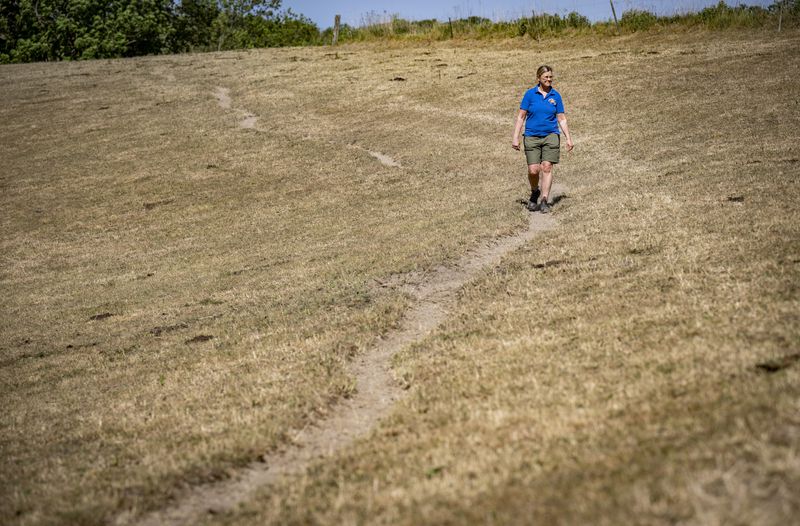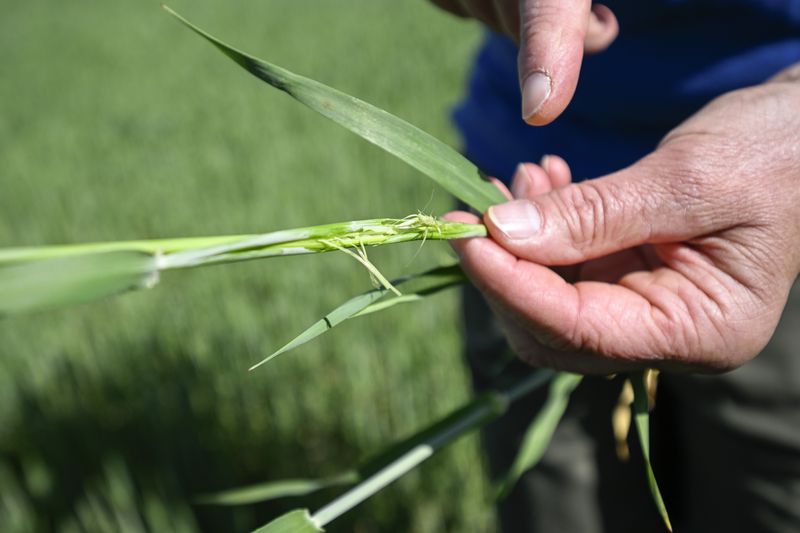Experts say the drought could be linked to the transition from La Niña to El Niño weather patterns in the Pacific, which is altering weather patterns around the world and often leading to dry summers in northern Europe.
Summer is bushfire season in southern Europe, but this year the northern continent is also at risk, with bushfire warnings in place from Scotland to the Nordic and Baltic countries.
The lack of rain and rising temperatures have led to dangerously dry conditions in the region, raising fears of a repeat of the summer of 2018, when massive wildfires tore through Sweden in particular.
Small forest fires are already burning in Norway, Sweden, Denmark, Finland and Scotland and experts fear it could get worse if there is no significant rain in the coming weeks.

Unlike the sun-drenched Mediterranean countries, which have to deal with wildfires every summer, the phenomenon is rare in northern European countries, where summers are normally cool and humid by comparison.
“These countries are relatively new to drought issues,” said Niclas Hjerdt, head of hydrological forecasting at Sweden’s meteorological agency, SMHI. “Usually we have excess water here in Northern Europe and Scandinavia. So there is not that historical knowledge of how to deal with drought situations that you might find in countries further south in Europe.
The SMHI says southern Sweden has received very little rain in May and not a single drop so far in June, leaving the ground exceptionally dry. The agency warns that the risk of wildfires is now “extremely high” in the southern half of the country, including the Stockholm area, and although rain is expected this weekend, it is unlikely they have a significant impact, Hjerdt said.
In neighboring Finland, the Finnish Meteorological Institute this week warned of dry terrain and a “high risk” of forest fires across most of the country, with a “very high risk” in the southwest. of Finland and the Aaland Islands in the Baltic Sea. Sweden and Finland are mainly covered in forests.

Similar warnings have been issued in Norway, Denmark and the Baltics, while Scotland has put in place its fourth bushfire warning in three weeks. Campfires are prohibited or discouraged in affected areas.
Experts say the drought could be linked to the transition from La Niña to El Niño weather patterns in the Pacific, which is altering weather patterns around the world and often leading to dry summers in northern Europe.
Hjerdt noted that it is too early to draw a link to climate change, but added that overall a warmer climate makes the northern region more vulnerable to wildfires by making summers longer and winters shorter, extending the “growing” season when most of the precipitation evaporates or transpires instead of sinking deeper into the ground.
Temperatures are rising in the region and are expected to reach 30 degrees Celsius in the coming days in Finland, a rarity for a country that straddles the Arctic Circle.
“The heat wave could also remain on the surface next week and spread to Lapland,” Finnish Institute meteorologist Tuomo Bergman said, referring to Finland’s northernmost region. Significant rain was not expected in Finland until the June 24 summer solstice, he said, when traditional bonfires will be banned.

Danish Agriculture Minister Jacob Jensen said: “Drought has already had a huge impact on our agriculture in recent weeks, and with the prospect of a rainless summer, we will need to have a clear plan on how which way we can help agriculture in the best possible way.
The Swedish Farmers’ Federation said the drought had already affected grassland crops and could impact cereals.
“If it does not rain soon, future harvests will be affected,” the industry group warned in a statement. He noted that due to the hot and dry summer of 2018, the industry lost almost the entire grain harvest at a cost of around 10 billion Swedish krona ($1.2 billion).
Globally, May was the second warmest May on record, according to the European Commission’s Copernicus Climate Change Service, with particularly hot temperatures in Canada and the northern United States. United. Canada has experienced massive wildfires that have sent dangerous haze deep into the United States.
In Europe, May was drier than average in southern Scandinavia, the Baltics and western Russia, Copernicus said. Meanwhile, most of southern Europe, with the exception of Spain and Portugal, experienced wetter than average conditions, with severe flooding in northern Italy.
Parts of the Balkans are currently experiencing heavy flooding caused by persistent heavy rains. Highways and roads in Serbia and Montenegro were closed due to landslides, some bridges collapsed and hundreds of people were rescued from flooded homes and cars.

The southwestern part of Europe was much drier. This spring in Spain has been the hottest and the second driest on record in the country. This created the conditions for wildfires to break out earlier this year and the need for water restrictions for agriculture, industry and the filling of private swimming pools in the hardest hit areas.
In mainland France, water resources are still suffering the effects of last summer’s drought, with two-thirds of national groundwater tables below normal levels. Localized wildfires have occurred in parts of France, including areas like Lorraine and the Vosges, where extreme heat and wildfires are rare.
Sweden experienced the worst wildfires in its modern history in 2018 during an unusually dry and hot summer. Forest fires have also affected Denmark, Finland and Norway.
“We are currently in a serious situation, it is similar to the one that prevailed before the summer of 2018,” Swedish Civil Defense Minister Carl-Oskar Bohlin said on Thursday, adding that airborne firefighting units were waiting.
Source: Latercera
I’m Rose Brown , a journalist and writer with over 10 years of experience in the news industry. I specialize in covering tennis-related news for Athletistic, a leading sports media website. My writing is highly regarded for its quick turnaround and accuracy, as well as my ability to tell compelling stories about the sport.


